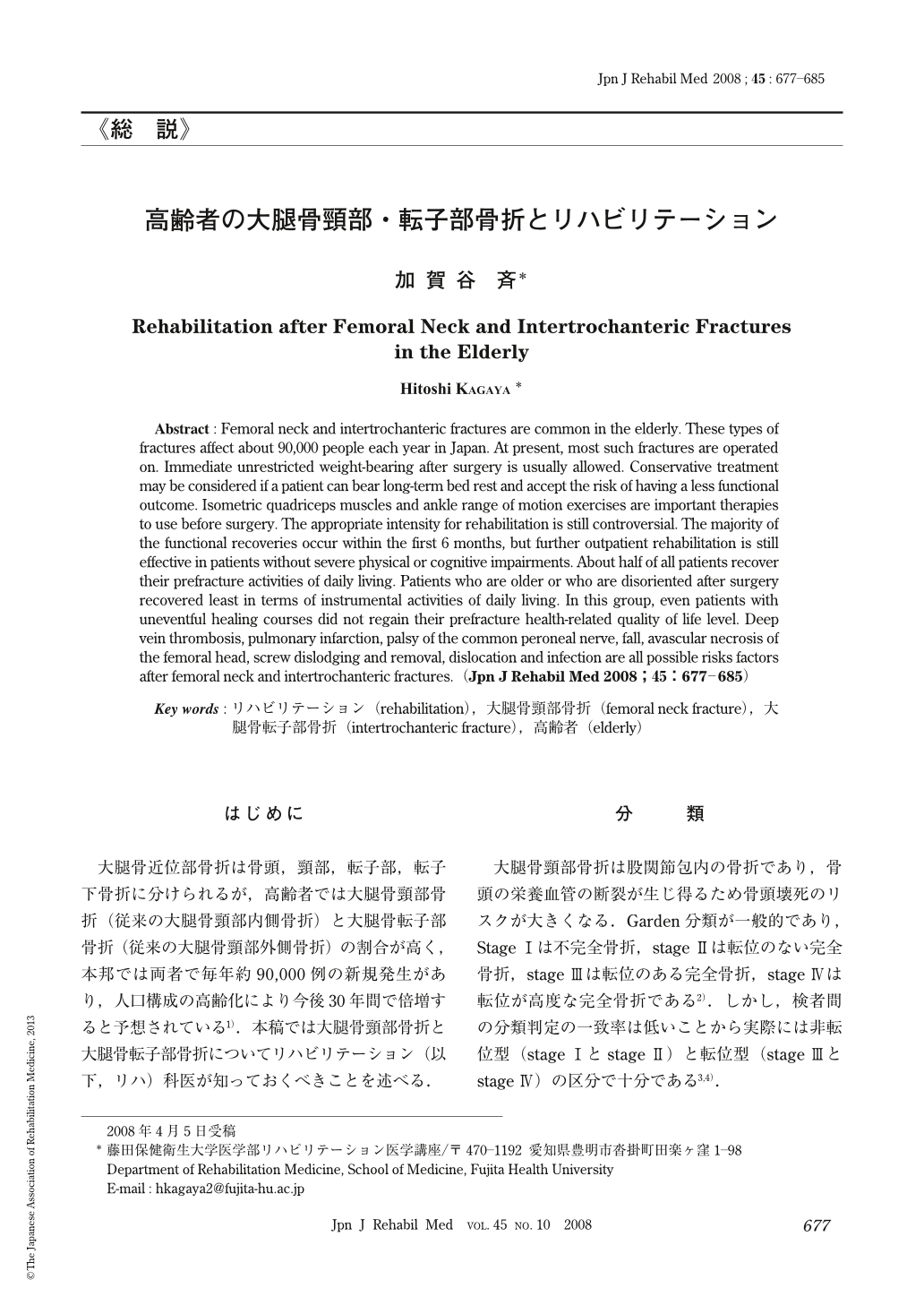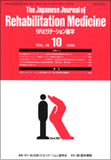Japanese
English
- 販売していません
- Abstract 文献概要
- 1ページ目 Look Inside
- 参考文献 Reference
はじめに
大腿骨近位部骨折は骨頭,頸部,転子部,転子下骨折に分けられるが,高齢者では大腿骨頸部骨折(従来の大腿骨頸部内側骨折)と大腿骨転子部骨折(従来の大腿骨頸部外側骨折)の割合が高く,本邦では両者で毎年約90,000例の新規発生があり,人口構成の高齢化により今後30年間で倍増すると予想されている1).本稿では大腿骨頸部骨折と大腿骨転子部骨折についてリハビリテーション(以下,リハ)科医が知っておくべきことを述べる.
Abstract : Femoral neck and intertrochanteric fractures are common in the elderly. These typesof fractures affect about 90,000 people each year in Japan. At present, most such fractures are operated on. Immediate unrestricted weight-bearing after surgery is usually allowed. Conservative treatment may be considered if a patient can bear long-term bed rest and accept the risk of having a less functional outcome. Isometric quadriceps muscles and ankle range of motion exercises are important therapies to use before surgery. The appropriate intensity for rehabilitation is still controversial. The majority of the functional recoveries occur within the first 6 months, but further outpatient rehabilitation is still effective in patients without severe physical or cognitive impairments. About half of all patients recover their prefracture activities of daily living. Patients who are older or who are disoriented after surgery recovered least in terms of instrumental activities of daily living. In this group, even patients with uneventful healing courses did not regain their prefracture health-related quality of life level. Deep vein thrombosis, pulmonary infarction, palsy of the common peroneal nerve, fall, avascular necrosis of the femoral head, screw dislodging and removal, dislocation and infection are all possible risks factors after femoral neck and intertrochanteric fractures.

Copyright © 2008, The Japanese Association of Rehabilitation Medicine. All rights reserved.


